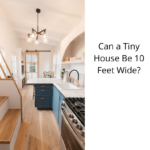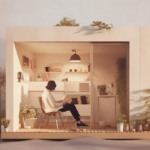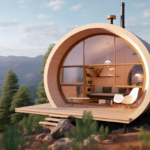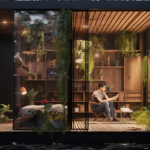Types of Tiny Houses
From Modest Trailer to Lucrative Tiny Home Village
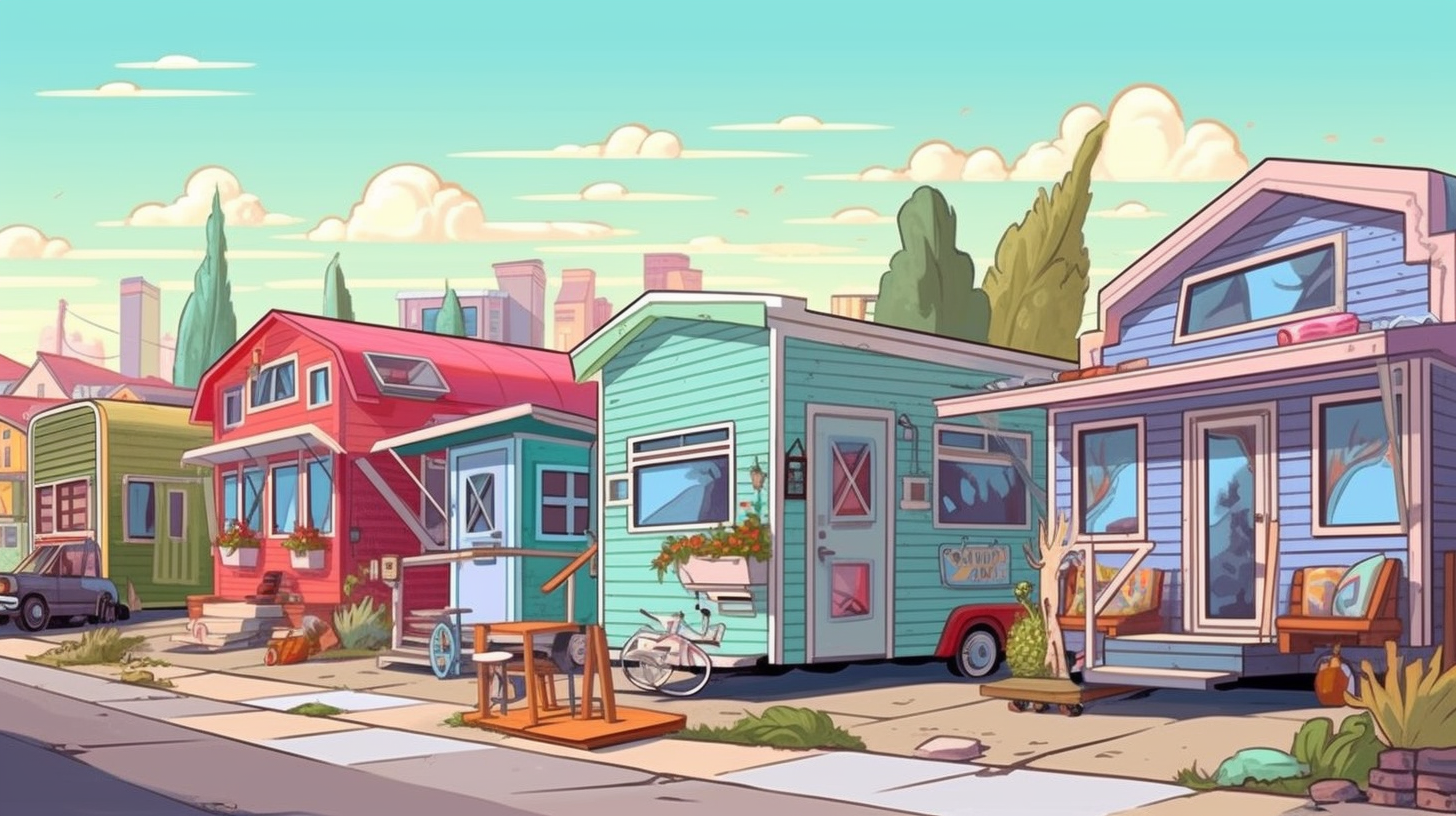
From $600 Trailer To $100k Tiny Home Village
As a person with a great interest in tiny houses, I was thrilled to learn about the inspiring story of a young couple who converted a rundown RV trailer into a thriving tiny home community, generating over $100,000 in income since 2018.
It all started with a stroke of ingenuity and creativity when the young couple flipped a brand-new RV they had wrecked, selling it for $600. This inspired an ambitious man to buy it and install unused appliances and fixtures in his cabin. But it was the author of the story who truly transformed the trailer into something special by building an 18-ft tiny home using traditional wood building methods.
What began as a single tiny home opened as a short-term rental in Sherwood, OR in Feb 2018 and quickly turned into a phenomenon, with bookings and 5-star reviews pouring in. The author’s success led to three more tiny home builds that same year and the creation of a tiny house village that has since become a thriving business generating over $100,000 in revenue.
Their story is a testament to the power of creativity, perseverance, and the growing popularity of tiny house living. In this article, I will delve into the fascinating details of how this couple went from flipping a $600 trailer to building a thriving tiny home village and the lessons we can learn from their inspiring journey.
Key Takeaways
- A $600 trailer was turned into an 18-ft tiny home using traditional wood building methods.
- The tiny home opened as a short-term rental in Sherwood, OR in Feb 2018 and was an immediate hit with bookings and 5-star reviews pouring in.
- The tiny house village became a successful enterprise generating over $100,000 in revenue since 2018, and includes 7 tiny homes and 5 teardrop trailers.
- The success of the tiny house village is considered a fairy tale and a miracle, and the author’s success story is an inspiration for others interested in tiny house living.
The Beginning
I bought the $600 RV trailer and transformed it into an 18-ft tiny home using traditional wood building methods. This became the first of many successful tiny homes in my growing village.
It all started when I stumbled upon the wrecked trailer that was flipped by a young couple who were confident in their ability to tow but had never towed before. I saw the potential in the abandoned trailer and bought it for a mere $600.
I used my building skills and techniques to turn the trailer into a tiny home that was both beautiful and functional. I spent $8,000 of my own cash and received $12,000 worth of sponsored materials and labor to make it happen. The transformation was remarkable, and I knew that I had found my calling in life.
From there, I embarked on three more tiny home builds that same year, including a luxury home that was featured at a local real estate event. It was an incredible journey, and I’m grateful every day for the success of my tiny house village.
The Build
Using traditional wood building methods, I constructed an 18-ft dwelling that was both charming and functional, incorporating unused appliances and fixtures from the original wreck. The process was challenging, but rewarding.
Here’s a breakdown of the costs:
- Lumber: $2,000
- Plumbing and electrical fixtures: $1,500
- Insulation and roofing materials: $1,000
Overall, I spent around $8,000 of my own money on the build. However, I also received $12,000 worth of sponsored materials and labor, which helped keep the costs down.
The end result was a cozy and well-crafted tiny home that exceeded my expectations. While traditional building methods may take longer and require more effort, the finished product is worth it.
I was able to create a space that was not only aesthetically pleasing, but also functional and comfortable. The cost breakdown demonstrates that with some creativity and resourcefulness, building a tiny home can be affordable and rewarding.
Success and Future Plans
Looking ahead, my plans for the future involve expanding the business and potentially branching out into other ventures. The success of the tiny house village has been overwhelming, and I’m grateful for every booking and positive review we receive. However, I believe there’s still room for growth and improvement.
One of my main focuses is on implementing sustainable practices throughout the tiny house village. This includes incorporating renewable energy sources, reducing waste, and utilizing eco-friendly materials. I’m also interested in exploring new markets, such as offering tiny homes as long-term rentals or even branching out into the development of tiny home communities.
With the success we’ve seen so far, I’m excited to see where the future takes us and I’m committed to continuing to provide unique and comfortable accommodations for those interested in tiny house living.
In conclusion, the success of the tiny house village has opened up many exciting possibilities for future growth and expansion. By incorporating sustainability practices and exploring new markets, I’m confident we can continue to provide our guests with exceptional experiences while also making a positive impact on the environment. I’m grateful for the opportunity to be a part of the tiny house movement and I look forward to seeing what the future holds.
Frequently Asked Questions
What were the biggest challenges faced during the building process of the tiny home village?
During the building process of my tiny home village, I faced funding challenges and construction obstacles. I had to get creative with sourcing materials and labor, and constantly problem-solve to stay within budget.
How did the author get sponsored materials and labor for their tiny home builds?
To obtain sponsored materials and labor for my tiny home builds, I utilized various sponsorship strategies such as reaching out to local businesses, networking with industry professionals, and offering promotional opportunities in exchange for support. Building materials sources included donations, discounts, and repurposed materials.
What kind of marketing strategies did the author use to promote their tiny home village?
I utilized social media marketing and influencer partnerships to promote my tiny home village. By creating visually appealing content and collaborating with popular influencers, I was able to attract a large audience and generate buzz around my business.
How did the author navigate zoning and legal requirements for their tiny home village?
Navigating regulations and legal hurdles for my tiny home village was challenging, but crucial for success. I researched local zoning laws and obtained necessary permits, working closely with officials to ensure compliance. It was a necessary step to ensure the sustainability of my business.
What advice would the author give to someone interested in starting their own tiny home village or short-term rental business?
My advice for starting a tiny home village or short-term rental business would be to carefully consider costs and thoroughly scout locations. It’s important to find affordable land, build efficiently, and create a unique experience for guests to ensure success.
Hi, I’m Emma. I’m the Editor in Chief of Tiny House 43, a blog all about tiny houses. While tree houses are often associated with childhood, they can be the perfect adult retreat. They offer a cozy space to relax and unwind, surrounded by nature. And since they’re typically built on stilts or raised platforms, they offer stunning views that traditional homes simply can’t match. If you’re looking for a unique and romantic getaway, a tree house tiny house might just be the perfect option.
Types of Tiny Houses
Minimalist Living: Introducing The Minim Tiny House
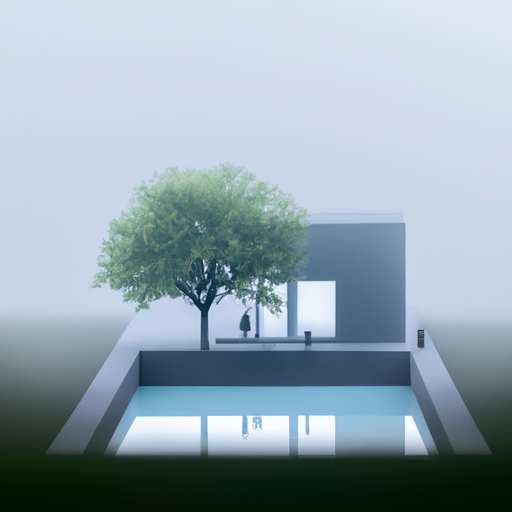
At first, I thought that small houses were just a passing trend – a fascination that would soon disappear, giving room for the next big breakthrough in home design. But my viewpoint completely changed when I came across the Minim Tiny House.
This iconic and revolutionary home has completely transformed the way I think about living small, and I’m excited to share my experience with you.
The Minim Tiny House is unlike anything I’ve ever seen before. With no loft and no walls, it’s hard to believe that this home is only 265 square feet. But as soon as you step inside, you’re greeted by the most incredible vaulted ceilings and a sense of spaciousness that is truly mind-blowing.
And with a full-size roll-out bed, a highly functional 10′ galley kitchen, and a moveable hydraulic table, this home is as practical as it is beautiful.
I can’t wait to share more about the design and features of the Minim Tiny House, so let’s get started!
Key Takeaways
- The Minim Tiny House is a revolutionary home that challenges the idea of living small.
- Despite having no walls or loft, the house is still spacious and includes separate areas for sleeping, working, and relaxing.
- The house maximizes every inch of its 210 ft2 interior space, with features such as a full-size roll-out bed, 10′ galley kitchen, moveable hydraulic table, and large movie screen/window shade.
- The design of the Minim Tiny House has been refined over 7 months of planning and 6+ years of full-time life testing, and the plans are available on Tiny House Blog for DIY. The cost to have it built for you is around $70,000.
Design and Features
I’m impressed by the Minim Tiny House’s design and features. It includes a full-size roll-out bed, a highly functional 10′ galley kitchen, a moveable hydraulic table, and a large movie screen that doubles as a window shade. The vaulted ceilings give the interior a spacious feel, despite its compact size.
The functional layout is also notable, with separate areas for sleeping, working, and relaxing. The 8′ long sofa that seats 5 and doubles as a guest bed is a clever space-saving solution. The Minim Tiny House’s design has been refined over 7 months of planning and 6+ years of full-time life testing.
The result is a thoughtfully designed home that maximizes every inch of its 210 ft2 of interior space. The separate 5′ desk and 5′ closet on top of the bed platform are particularly impressive, as is the ‘wet bath’ that accommodates any type of toilet desired. Overall, the Minim Tiny House is a great example of minimalist living done right.
Cost and Dimensions
The cost to build the Minim dwelling is approximately $35,000, with an approximate weight of 14,000# and dimensions of 11’x22′ providing 210 ft2 of interior space. Building process is straightforward, and the plans are available on Tiny House Blog. With a bit of DIY experience, anyone can build their own Minim house and customize its features to their liking.
If you prefer to have it built for you, the approximate cost would be around $70,000. However, it’s important to note that there are customization options available, so the final cost may vary depending on your preferences.
Whether you choose to build it yourself or have it built, the Minim tiny house offers a practical and efficient living space that allows for a contented life with minimal dwelling size.
Reader Feedback
Upon reading feedback from a reader, it appears that the interior design of the Minim dwelling has been well-received, while the exterior may not be to everyone’s taste. While the Minim Tiny House has a sleek and modern design, it may not appeal to those who prefer a more traditional look. However, it’s important to note that the exterior of the Minim Tiny House can easily be transformed with the right grounds and personalization options.
To give you an idea of the possibilities, I’ve created a table below showcasing some exterior transformation ideas that can completely change the look and feel of the Minim Tiny House. From adding a porch to incorporating natural elements, there are plenty of ways to make this dwelling your own. With a little creativity and attention to detail, the Minim Tiny House can be transformed into the perfect home for any minimalist living enthusiast.
| Exterior Transformation Ideas | Description | |||
|---|---|---|---|---|
| Add a Porch | Extend the living space and add an inviting touch with a small porch. | |||
| Incorporate Natural Elements | Use wood and stone accents to create a warm and inviting exterior. | |||
| Change the Color Scheme | Experiment with different colors to create a unique and personalized look. | |||
| Add Landscaping | Use plants and landscaping to create a beautiful and natural setting around the tiny home. | Incorporate Outdoor Lighting | Install exterior lighting to enhance the ambiance and provide safety at night. |
Frequently Asked Questions
What type of toilet can be accommodated in the ‘wet bath’ of the Minim Tiny House?
I’ll keep it simple. The wet bath in the Minim Tiny House can accommodate any toilet options, making space utilization a non-issue. Euphemistically speaking, it’s a functional toilet in a compact bathroom.
How is the through-the-wall A/C unit hidden into the desk shelving for cooling?
I hid the through-the-wall a/c unit into my desk shelving for cooling in the Minim Tiny House. It’s a practical solution that saves space and keeps the interior clutter-free. The desk doubles as a functional storage area, making it an efficient use of space.
Can the Minim Tiny House be customized with different exterior designs?
Customization options for the Minim Tiny House are endless, allowing you to transform the exterior into anything you desire. It’s like painting a blank canvas, giving you the freedom to create a unique and personalized look.
What inspired the author to turn a $600 trailer into a $100,000 Minim Tiny House?
My motivation was to create a functional, beautiful home that challenged the notion of what a house should be. The design concept evolved after years of testing, resulting in a space that maximizes every inch.
Is there any recommended towing vehicle for the Minim Tiny House?
For the Minim Tiny House, a recommended towing vehicle should have a weight capacity of at least 14,000 pounds. I suggest doing research and consulting with a professional to ensure safe transportation.
Hi, I’m Emma. I’m the Editor in Chief of Tiny House 43, a blog all about tiny houses. While tree houses are often associated with childhood, they can be the perfect adult retreat. They offer a cozy space to relax and unwind, surrounded by nature. And since they’re typically built on stilts or raised platforms, they offer stunning views that traditional homes simply can’t match. If you’re looking for a unique and romantic getaway, a tree house tiny house might just be the perfect option.
Types of Tiny Houses
Builder Mike’s Bright Tiny House: A Masterpiece of Minimalist Living
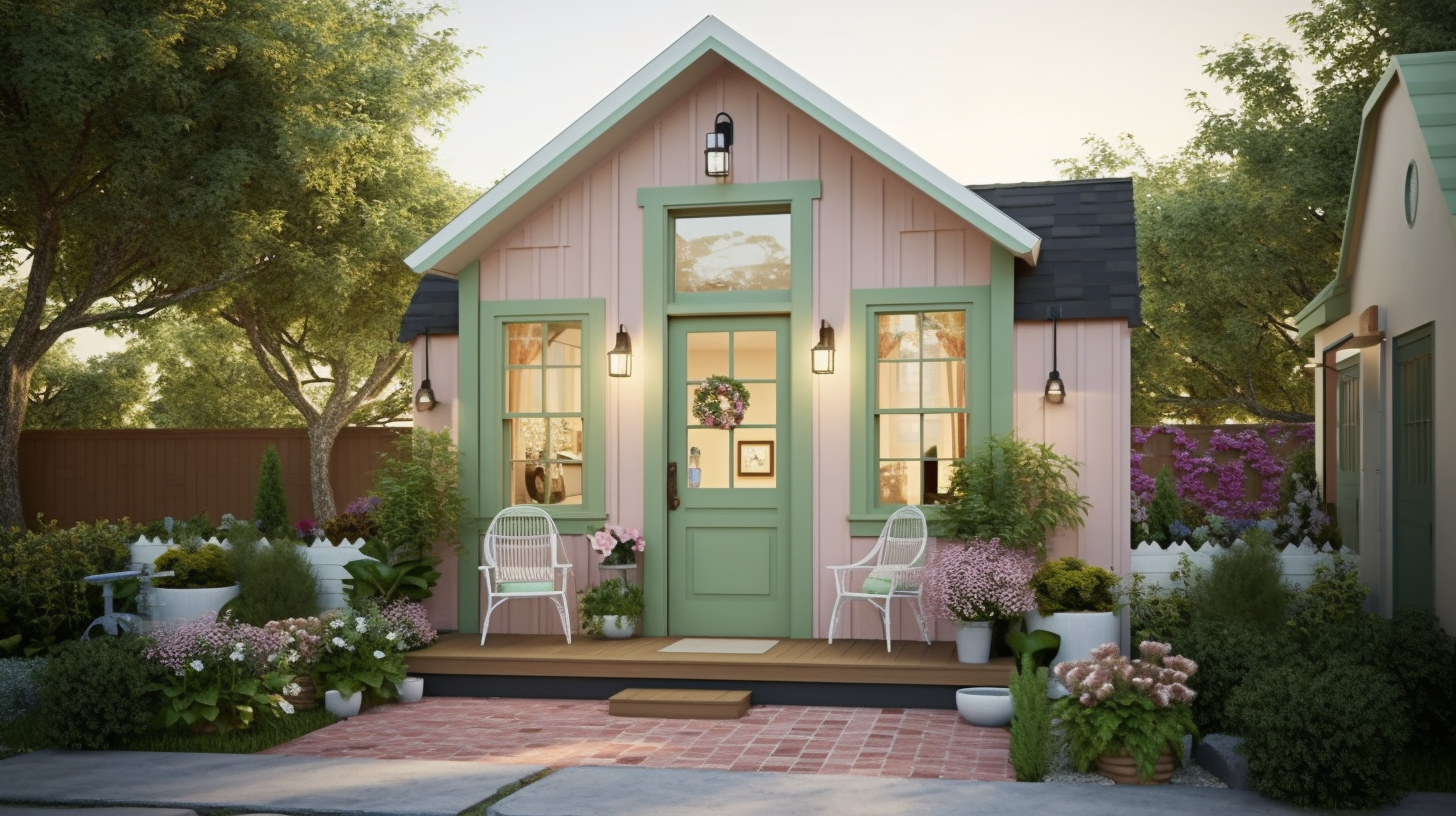
Builder Mike’s Bright Tiny House: A Small-Footprint Dream!
Mike’s Bright Tiny Home embodies the concept of minimalist living with its compact layout. Measuring 30×10 feet and standing at a height of 10 feet 8 inches, this cozy dwelling is a testament to the builder’s skill in creating small, yet functional spaces. It reflects his expertise in building larger homes as well as his newfound commitment to reducing his environmental impact.
In this article, we will explore the features of Builder Mike’s Bright Tiny House, including its living space, design, and functionality. We will also delve into the builder’s experience and expertise in constructing small homes and his recommendations for certification.
Whether you are looking to buy a tiny house or commission a custom home, this article will provide you with valuable insights into the world of small-footprint living.
Key Takeaways
- Builder Mike’s Bright Tiny House is a 30×10 feet living space designed to maximize functionality and comfort within a small footprint.
- The tiny house incorporates storage throughout, large windows for natural light, and a pass-through window connecting indoor and outdoor living spaces.
- Certification and professional inspection are recommended for safety, compliance with building codes, and increased resale value, with DIY options being cost-effective but requiring adherence to regulations and safety measures.
- Living in a tiny house can help individuals simplify their lives, reduce their carbon footprint, save money, and live a more sustainable lifestyle.
Living Space Features
The living space of Builder Mike’s tiny house is designed to maximize functionality and comfort within a small footprint. The many large windows create a bright and airy atmosphere, making the space feel larger than it is. A pass-through window connects the indoor and outdoor living spaces, creating a seamless transition between the two. This feature not only adds to the overall aesthetic of the tiny house but also provides a practical way to bring in fresh air and natural light.
In addition to the pass-through window, the living space also includes an L-shaped counter seating area that serves as both a dining space and a work-from-home area. The counter seating is strategically placed to maximize the space and provide ample room for multiple functions.
Storage is also incorporated throughout the tiny house, including in the bathroom, making the most out of every inch of the living space. These design features showcase Builder Mike’s ability to create a functional and comfortable living space within a small footprint, without sacrificing style or practicality.
Builder’s Experience and Expertise
With a background in constructing large-scale homes, Builder Mike has embraced the challenge of building compact dwellings. His experience in building massive homes has helped him to refine his building techniques and design inspiration. As a result, he has become an expert in constructing small-footprint homes that are both functional and aesthetically pleasing.
He shares his knowledge and experience with those who are interested in his work, providing insight into the certification process and the best practices for building tiny houses. To evoke emotion in his audience, Builder Mike emphasizes the benefits of living in a tiny house.
He highlights how his own downsizing experience has allowed him to simplify his life and focus on what truly matters. He also notes that living in a tiny house can help individuals reduce their carbon footprint, save money, and live more sustainably.
By sharing his own experience with building and living in a tiny house, Builder Mike inspires others to consider the advantages of living in a small-footprint home.
Certification Recommendations
Certification of tiny houses is a topic of great importance, and it is recommended that individuals bring in a professional to inspect their home before seeking certification.
Certification offers several benefits, including peace of mind and an assurance of safety. It provides a way for individuals to ensure their tiny home meets building codes and regulations, which can be especially important for those who plan to travel with their tiny house. Certification also increases the resale value of the home and can help with financing options.
For those who choose to build their tiny homes themselves, certification may not be a priority. However, it is still important to ensure the home is safe and meets building codes. DIY options for tiny house building can be cost-effective, but it is crucial to research and understand the regulations and safety measures that must be followed.
Bringing in a professional for an inspection can help identify any potential issues and provide guidance on how to address them. Ultimately, whether seeking certification or not, ensuring the safety and compliance of a tiny home should be a top priority for all builders.
Benefits of Certification DIY Options for Tiny House Building Importance of Safety and Compliance Provides peace of mind Cost-effective Ensures safety of occupants Assures safety Must understand regulations Compliance with building codes Increases resale value Professional inspection recommended Importance of following regulations can prevent costly legal issues or accidents in the future.
Frequently Asked Questions
What materials were used to construct the tiny house?
The materials used in constructing a tiny house vary depending on the builder’s preference. However, sustainable building and cost-efficient materials are usually the top considerations.
Sustainable building materials are those that have a low environmental impact, such as reclaimed wood, bamboo, and recycled steel.
On the other hand, cost-efficient materials are those that are readily available and affordable, such as concrete blocks, corrugated metal, and fiber cement.
These materials not only reduce construction costs but also provide durability and energy efficiency. The use of these materials in tiny house construction has become increasingly popular due to their positive impact on the environment and cost-effectiveness.
How long did it take to build the tiny house?
The construction timeline and building process of Builder Mike’s tiny house are unknown without additional context. However, it is common for a tiny house to take anywhere from several months to a year to build, depending on the size, complexity, and availability of materials.
The building process typically involves designing the layout and selecting materials, framing the structure, installing insulation, electrical and plumbing systems, and finishing the interior and exterior. It may also involve obtaining permits and certifications, depending on local regulations.
Overall, building a tiny house requires careful planning, attention to detail, and a willingness to work with limited space and resources.
What challenges did Builder Mike face while building the tiny house?
Budget constraints and zoning regulations are two major challenges that builders face when constructing tiny homes. With limited space, it can be difficult to fit everything necessary into such a small footprint, and the cost of materials and labor can quickly add up.
Additionally, zoning regulations can vary widely by region, making it difficult to find a suitable location to build and park a tiny home. Builder Mike likely faced similar challenges when building his tiny house, but his experience in the industry and expertise in design likely helped him to overcome these obstacles.
Despite the challenges, the end result is a beautiful and functional home that showcases the benefits of living in a small space.
Has Builder Mike built any tiny houses with unique features or designs?
Builder Mike has demonstrated his innovative designs and creative use of space in his tiny houses. He has built homes with unique features such as pass-through windows, L-shaped counter seating, and strategically placed storage areas.
His experience in building massive homes before transitioning to small-footprint homes has helped him improve his designs and make the most of limited space. Additionally, he has helped his neighbors with repairs and other handyman projects, further showcasing his expertise in the field.
While Mike recommends bringing in someone to inspect a certified tiny house, his designs demonstrate his attention to detail and commitment to creating functional and aesthetically pleasing tiny homes.
How does Builder Mike incorporate sustainable and eco-friendly practices into his tiny house builds?
It is quite ironic how small-footprint homes have become a trend despite their potential to contribute to a more sustainable and eco-friendly way of living.
Nevertheless, Builder Mike has taken this trend to the next level by incorporating sustainable practices into his tiny house builds.
He uses eco-friendly insulation to ensure energy efficiency and reduce carbon footprint.
Additionally, he integrates solar power into his designs, which not only reduces his dependence on the grid but also saves money in the long run.
By doing so, he is not only creating a comfortable living space but also setting an example for others to follow.
Conclusion
In conclusion, Builder Mike’s tiny house is a marvel of small-footprint design. Its features are impressive, from the high ceilings to the bright colors that make the space feel open and welcoming. Builder Mike’s experience as a former builder of massive homes has certainly helped him in his transition to building tiny homes. His expertise is evident in the thoughtful layout of his tiny house and the attention to detail in its construction.
As for certification, Builder Mike has some recommendations for those looking to build or buy a tiny house. He emphasizes the importance of ensuring that the house is built to code and meets all safety standards. He also suggests researching different types of certifications and finding one that works best for your needs.
Overall, Builder Mike’s bright tiny house is a testament to the possibilities of small-footprint living. It is a dream home for anyone looking to downsize and simplify their life. And if you’re in the market for a custom tiny home, Builder Mike is certainly someone to consider. His passion for small-footprint design and his expertise in construction make him a valuable resource in the tiny house community.
Hi, I’m Emma. I’m the Editor in Chief of Tiny House 43, a blog all about tiny houses. While tree houses are often associated with childhood, they can be the perfect adult retreat. They offer a cozy space to relax and unwind, surrounded by nature. And since they’re typically built on stilts or raised platforms, they offer stunning views that traditional homes simply can’t match. If you’re looking for a unique and romantic getaway, a tree house tiny house might just be the perfect option.
Types of Tiny Houses
Newlyweds Embrace Luxury and Financial Independence with Stunning 40-Ft Tiny House 🏡💰

Newlyweds’ Gorgeous 40-Ft Tiny House For Financial Independence
Recently, there has been a growing interest in minimalism, with many individuals and couples searching for ways to reduce their environmental impact, simplify their lives, and save money. For Leo and Shannon, a newly married couple, the solution they found was a custom-built 40-ft gooseneck tiny home by Liberation Tiny Homes.
This tiny house not only provides them with a luxurious and comfortable living space, but also allows them to achieve financial independence through reduced living expenses. The interior features of this tiny house are designed to maximize space and functionality while maintaining a luxurious feel.
The spacious bathroom, complete with a full-sized shower and elegant fixtures, is a standout feature. The open-plan living area includes a full kitchen with high-end appliances and a cozy seating area. The bedroom loft is cleverly designed with ample storage and an airy feel.
Additionally, the outdoor living spaces, including a large deck and rooftop terrace, provide additional areas for relaxation and enjoyment of the surrounding natural beauty. Overall, this tiny house is a stunning example of how downsizing can be both practical and luxurious.
Key Takeaways
- Newlyweds Leo and Shannon live in a custom 40-ft gooseneck tiny house built by Liberation Tiny Homes, which offers a spacious interior with high ceilings and a large open area.
- The couple moved to a semi-rural tiny home community in North Carolina to gain financial independence, lowering their monthly expenses drastically and viewing tiny living as a vehicle for financial independence and saving for their future.
- Their luxurious and practical bathroom features a toilet closet and a beautifully tiled shower with a waterfall shower, skylight, and bench, while their standing-height bedroom has windows close to the ceiling for natural light and privacy.
- The couple’s outdoor areas triple their overall living space with a pergola-covered patio, a sizable deck, and a huge rooftop deck, and they were able to finance their home through savings and a 401(k) policy that allowed them to pull money without penalty during the pandemic.
Interior Features
The interior of the couple’s custom 40-ft gooseneck tiny house, built by Liberation Tiny Homes, features a spacious design with a 10-foot width, high ceilings, and an expansive open area.
The living room is smartly designed with a 10-foot wide couch that can fit six people, providing ample seating space for visitors. In addition, the living room has a smart solution for the TV, making it a perfect place for entertainment.
The bathroom of this tiny house is luxurious and practical, featuring a beautifully tiled shower with a waterfall shower, skylight, and bench. The design of the toilet closet provides privacy, ensuring that the bathroom remains functional without compromising on space.
The standing-height bedroom has large windows close to the ceiling that allow natural light to flow in while also providing privacy. The small loft above the central bathroom area ceiling adds an extra dimension to the bedroom, making this tiny house feel more spacious and functional.
Outdoor Living Spaces
Featuring a pergola-covered patio, a sizable deck, and a huge rooftop deck, the outdoor areas of the 40-ft gooseneck tiny house offer ample living space.
The couple has designed the outdoor decor to be functional and aesthetically pleasing, making it the perfect spot for entertaining guests or enjoying some quiet time alone.
The pergola-covered patio is located right outside the front door, creating a seamless transition between indoor and outdoor living.
The patio is furnished with a cozy seating area and a small table, perfect for enjoying a morning cup of coffee or a glass of wine in the evening.
The sizable deck is located at the back of the tiny house and is outfitted with a larger dining area and additional seating.
Lastly, the huge rooftop deck is the perfect spot to take in the stunning views of the surrounding area.
The couple has added string lights and potted plants to create a warm and inviting atmosphere for their guests.
Overall, the outdoor living spaces of this tiny house are a testament to the couple’s creativity and design skills, offering a beautiful and functional extension of their home.
Achieving Financial Independence
Attaining economic autonomy can be compared to scaling a mountain, and for Leo and Shannon, moving to a semi-rural community and downsizing to a 40-ft gooseneck tiny house was the key to reducing their monthly expenses and achieving their savings goals. Their tiny house journey is a testament to the idea that investing in one’s future can start with a simple decision to live with less. For the couple, it meant prioritizing financial independence over material possessions and embracing a minimalist lifestyle.
To make their tiny house dream a reality, Leo and Shannon employed various investment strategies and budgeting techniques. They were able to finance their home through savings and a 401(k) policy that allowed them to pull money without penalty during the pandemic. They also purchased appliances separately during Black Friday sales, taking advantage of significant discounts. By being mindful of their expenses and investing in their future, they were able to achieve their financial goals and gain the freedom to pursue their passions.
Investment Strategies Budgeting Techniques Benefits Saving for a down payment Tracking expenses Building equity Investing in a 401(k) policy Creating a budget Lowering monthly expenses Taking advantage of sales Paying off debt Saving for future goals Investing in home improvements Negotiating bills Increasing net worth Diversifying investment portfolio Seeking out financial advice Building an emergency fund Teaching financial literacy to others Maximizing tax deductions Planning for retirement Setting financial goals and tracking progress Avoiding unnecessary expenses Utilizing cashback and rewards programs
Considering alternative income streams and staying informed on financial news and trends.
Frequently Asked Questions
How did Leo and Shannon decide on the layout and design of their tiny house?
The layout decisions and design choices of Leo and Shannon’s tiny house were likely influenced by their desire for functionality, comfort, and aesthetics. They may have considered factors such as the dimensions of the trailer, their lifestyle needs, and their personal preferences when deciding on the placement of different areas within the house.
The 10-foot width of the house likely played a role in determining the spaciousness of the interior, while the high ceilings and large open area may have contributed to a sense of airiness and lightness. The couple’s choice of a 10-foot wide couch that can fit six people and a smart solution for the TV in the living room suggests a focus on socializing and relaxation.
Additionally, Shannon’s comfy home office in a loft above the couch with a smart chair solution may reflect the importance of work-life balance. The luxurious and practical bathroom with a toilet closet and a beautifully tiled shower with a waterfall shower, skylight, and bench likely reflects their desire for comfort and functionality.
Finally, their outdoor areas triple their overall living space, suggesting an emphasis on enjoying nature and the outdoors. Overall, the layout and design of Leo and Shannon’s tiny house seem to prioritize functionality, comfort, and aesthetics.
What challenges did they face during the building process?
The building process of a tiny house can present numerous challenges, such as zoning regulations, building codes, and limited space. However, these obstacles can also lead to creative solutions and unique designs.
In terms of financial benefits, living in a tiny house can result in a drastic reduction in monthly expenses, as seen in the case of Leo and Shannon who pay $600 a month in land rent and have propane, electric, and internet as their only additional expenses. This financial independence can allow for saving and investing in the future.
Overall, while the building process of a tiny house may present challenges, the financial benefits can outweigh any difficulties.
How do they handle storage in such a small space?
Maximizing space and finding creative solutions for storage is a common challenge for those living in small homes, especially tiny houses. In order to make the most of the limited space available, individuals often turn to innovative storage solutions such as hidden compartments, multi-functional furniture, and vertical shelving.
In the case of Leo and Shannon’s 40-ft gooseneck tiny house, they have utilized a variety of storage solutions to make their home feel spacious and organized. This includes under-bed storage, built-in shelving, and a large closet in the bedroom. Additionally, they have incorporated creative design elements such as a fold-down dining table and a hanging pot rack in the kitchen to maximize space and functionality.
Overall, the couple has demonstrated a commitment to thoughtful design and practicality in their tiny home, utilizing every inch of space to create a comfortable and functional living environment.
Have they faced any unexpected maintenance costs or issues with their tiny home?
When it comes to tiny homes, maintenance challenges and budgeting strategies are major considerations. As with any home, unexpected issues can arise that require maintenance and repairs, and these costs can quickly add up.
To mitigate these challenges, it is important to budget for regular maintenance and to be prepared for unexpected expenses. Additionally, it is important to carefully consider the materials and systems used in the construction of a tiny home, as well as the location and climate, in order to minimize maintenance needs and costs.
While there is no way to completely avoid maintenance challenges with a tiny home, careful planning and budgeting can help to minimize their impact.
What advice do they have for others considering downsizing to a tiny home for financial independence?
Making the decision to downsize to a tiny home for financial independence involves weighing the benefits against the drawbacks. While living in a tiny home can significantly reduce monthly expenses and provide a simpler lifestyle, it also requires significant lifestyle changes and sacrifices.
To successfully transition to tiny living, it is important to carefully consider the financial and emotional implications and be willing to adapt to a smaller living space. It is also crucial to have a solid financial plan and to be prepared for unexpected maintenance costs.
Ultimately, downsizing to a tiny home can offer financial freedom and a unique living experience, but it requires careful planning and a willingness to embrace a simpler lifestyle. As the saying goes, ‘good things come in small packages.’
Conclusion
In conclusion, the story of Leo and Shannon’s custom 40-ft gooseneck tiny house built by Liberation Tiny Homes is a testament to the benefits of downsizing and achieving financial independence.
The interior features of the tiny house are both functional and luxurious, providing ample space for the couple to live comfortably.
The outdoor living areas add to the overall appeal of the tiny house, allowing the couple to enjoy the beauty of nature while still having all the amenities of a traditional home.
The tiny house movement is gaining popularity as more people seek to simplify their lives and reduce their environmental impact.
Leo and Shannon’s story is a shining example of how downsizing can lead to financial freedom and a higher quality of life.
As the saying goes, ‘less is more,’ and this tiny house proves that statement to be true.
With its innovative design and thoughtful features, it is no wonder that the tiny house movement is here to stay.
Hi, I’m Emma. I’m the Editor in Chief of Tiny House 43, a blog all about tiny houses. While tree houses are often associated with childhood, they can be the perfect adult retreat. They offer a cozy space to relax and unwind, surrounded by nature. And since they’re typically built on stilts or raised platforms, they offer stunning views that traditional homes simply can’t match. If you’re looking for a unique and romantic getaway, a tree house tiny house might just be the perfect option.
-

 Beginners Guides3 months ago
Beginners Guides3 months agoHow To Buy A Tesla Tiny House
-

 Energy Efficiency3 weeks ago
Energy Efficiency3 weeks agoBest Tiny Homes For Cold Climates
-

 Beginners Guides3 months ago
Beginners Guides3 months agoTiny House Nation Where Are They Now Stephanie
-

 Tiny House Resources (e.g., legalities, cost, insurance, FAQs)1 month ago
Tiny House Resources (e.g., legalities, cost, insurance, FAQs)1 month agoDo Tiny Homes Need Planning Permission?
-

 Beginners Guides3 months ago
Beginners Guides3 months agoFrom The Show Tiny House Nation How Many Keep Their Tiny House?
-

 Beginners Guides1 month ago
Beginners Guides1 month agoUsing a Climbing Net For Treehouse Construction
-

 Beginners Guides1 month ago
Beginners Guides1 month agoHow to Build a Treehouse Without Drilling Into the Tree
-

 Beginners Guides1 month ago
Beginners Guides1 month agoHow to Build a Treehouse Rope Bridge




